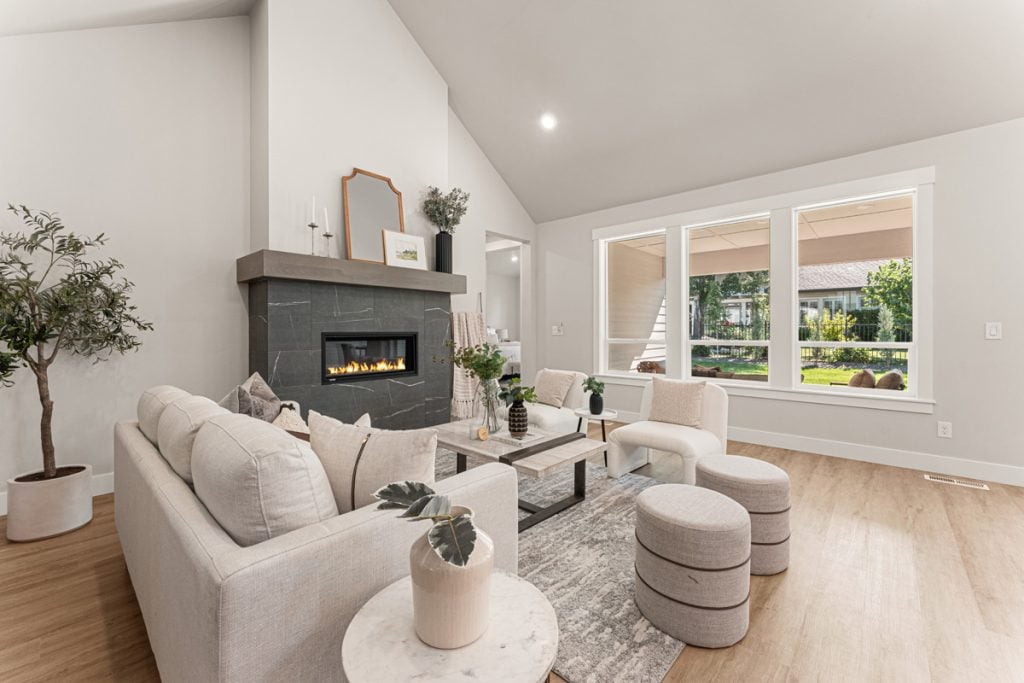

Living in a constantly cluttered space can be draining. It feels like no matter how many times you clean, the piles of mail, stray shoes, and random objects reappear almost instantly. The good news is that keeping your home tidy doesn’t require hours of cleaning every weekend. The real secret lies in adopting a few small, consistent daily habits.
These simple routines are designed to stop messes before they start. By integrating them into your day, you can maintain a sense of order with minimal effort. This guide will walk you through practical, easy-to-implement habits that will transform your home from a source of stress into a peaceful retreat.
Embrace the “Touch It Once” Principle
Procrastination is a major source of clutter. We drop mail on the table, leave clothes on a chair, or put an empty box on the floor, all to deal with “later.” The “Touch It Once” principle helps break this habit.
The rule is simple: whenever you pick something up, deal with it fully instead of moving it to another temporary spot.
How to Practice “Touch It Once”
- Mail and Paperwork: When you bring the mail inside, stand near a recycling bin. Immediately toss junk mail, open bills and place them where you pay them, and file important documents. Don’t let the pile hit the kitchen counter.
- Laundry: Once the dryer finishes, fold the clean clothes and put them directly into drawers and closets. Avoid letting them sit in the basket for days.
- Dishes: After a meal, rinse your plate and put it directly into the dishwasher instead of leaving it in the sink.
It may feel like extra effort in the moment, but this habit prevents a buildup of unfinished tasks later.
Create a “Drop Zone” by the Door
Your entryway is the first and last space you see daily, and it often becomes a chaotic dumping ground. Creating a designated “drop zone” gives every item a home, preventing clutter from spreading. A functional drop zone doesn’t need to be elaborate, just intentional.
Elements of an Effective Drop Zone
- A hook for keys: Hang keys immediately to avoid frantic morning searches..
- A tray or bowl: Use a small tray for sunglasses, wallets, and loose change.
- Shoe storage: A simple mat, tray, or a low-profile shoe rack keeps footwear contained and prevents dirt from being tracked through the house.
- Hooks or a coat rack: Give coats, scarves, and backpacks a dedicated place to hang.
By training yourself and your family to use this space consistently, you contain the mess of daily comings and goings to one manageable area.
The 10-Minute Evening Reset
Waking up to yesterday’s mess can ruin your morning. A quick, 10-minute “closing shift” before bed can reset your main living areas. This isn’t about deep cleaning; just a fast decluttering session with big visual impact.
Set a timer and work quickly. You’ll be surprised how much you can get done in 10 minutes.
Your Evening Tidy-Up Routine
- Living Room: Straighten cushions, fold blankets, and return remotes, books, and magazines to their spots.
- Kitchen: Load the last few dishes into the dishwasher. Wipe down the counters and table.
- General Pickup: Do a quick walkthrough of your main floor, gathering and putting away out-of-place items like cups, toys, or shoes.
This simple habit gives you a clean slate every morning, prevents clutter buildup, and brings peace at the end of the day.
The “One In, One Out” Rule
Clutter happens when more items come into your home than leave. To stay organized, try the “One In, One Out” rule: for every new item you bring in, let go of an old one.
This habit helps you manage your space, avoid overstuffed closets and cabinets, and be more mindful of what you own.
How to Apply the Rule Across Your Home
- Closet: Buy a new sweater? Donate an old one.
- Kitchen: Got a new gadget or mug? Let go of one you rarely use.
- Bookshelf: For every new book, donate, sell, or gift one you no longer read.
- Kids’ Toys: When your child gets a new toy, help them pick an old one to donate.
This practice keeps your possessions curated and ensures you only own things you truly need, use, and love.
Never Leave a Room Empty-Handed
This is one of the simplest and most effective habits for preventing clutter build-up. The idea is to scan a room before you leave it and find at least one item that doesn’t belong there. Are you walking from the living room to the kitchen? Grab that empty coffee mug off the end table and take it with you. Heading upstairs to bed? Carry up the book you were reading or the sweater you left on the sofa.
This “traveling tidiness” approach breaks down decluttering into tiny, manageable actions that you perform all day long. It prevents items from piling up and becoming a bigger, more daunting task later.
Start Small and Build Momentum
Trying to adopt all these habits at once can feel overwhelming. The key to long-term success is to start small and focus on consistency. Pick just one habit to work on this week. Maybe it’s making your bed every morning or committing to a 10-minute evening reset.
Once that one habit starts to feel automatic, add another. Over time, these small, individual actions will combine to create a powerful routine that keeps your home consistently clutter-free. Don’t aim for perfection; aim for progress. Every small step you take is a victory in creating a more peaceful and organized home.
Looking for a new home? Williams Homes offers thoughtfully designed new construction homes in vibrant communities across California, Idaho, Montana, and Texas. Explore our move-in ready homes and new home communities at WilliamsHomes.com.